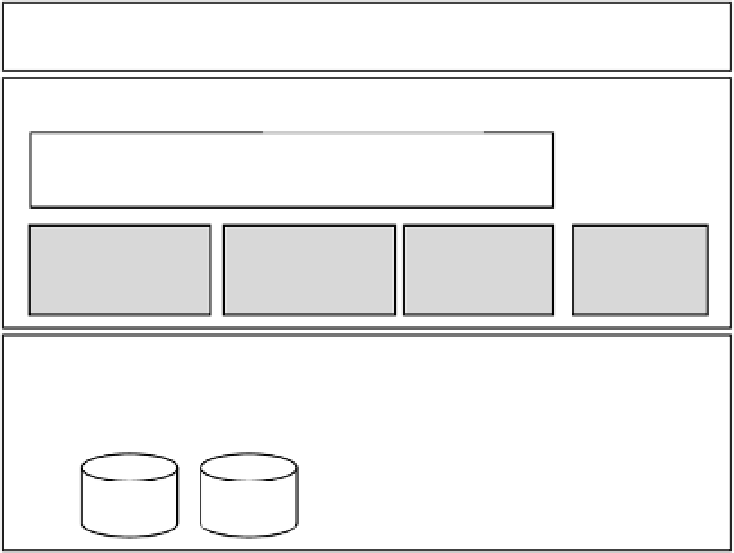Information Technology Reference
In-Depth Information
User Interface
Sevices
eLearning Service
Integration
& User
Profiling
SCORM Engine
Test Engine
Event
Engine
AVCall
Processor
Digital Libraries
Catalogue
DLib
M
DLib
Q
DLib
T
DLib
P
DLib
D
Fig. 6. Standarised Architecture of the portal
4.2 Education cluster
In order to provide more effective and personalized user support, we need to enhance the
flexibility, reactivity and pro-activeness of the portal including intelligent components into
the architecture. The pro-activity improves the usability and friendliness of the system to the
users. Pro-activity means that the software can operate "on behalf'' of the user'' and "activate
itself'' when it "estimates'' that its intervention is necessary. Two approaches are available:
Direct integration of intelligent components in the currently existing architecture - in
this way we extend the existing portal architecture;
Building an education cluster.
The litter approach is preferable because it match with DeLC philosophy for building of
more complex structures. Moreover, the former approach involves difficulties in the
integration of two environments with different characteristics - portal frame and agent-
oriented environment.
The education cluster consists of two nodes - the existing portal and a new node, called
Agent Village (AV), where the "assistants'' will "live in'' (Figure 7). Three basic problems
have to be solve in order to create the cluster:
Architecture of the AV node;
Interaction between the portal and AV;
What kind of intelligent assistance for the portal services.
AV node is implemented as an agent-oriented server, by help of JADE environment
[Bellifemine,2007].





